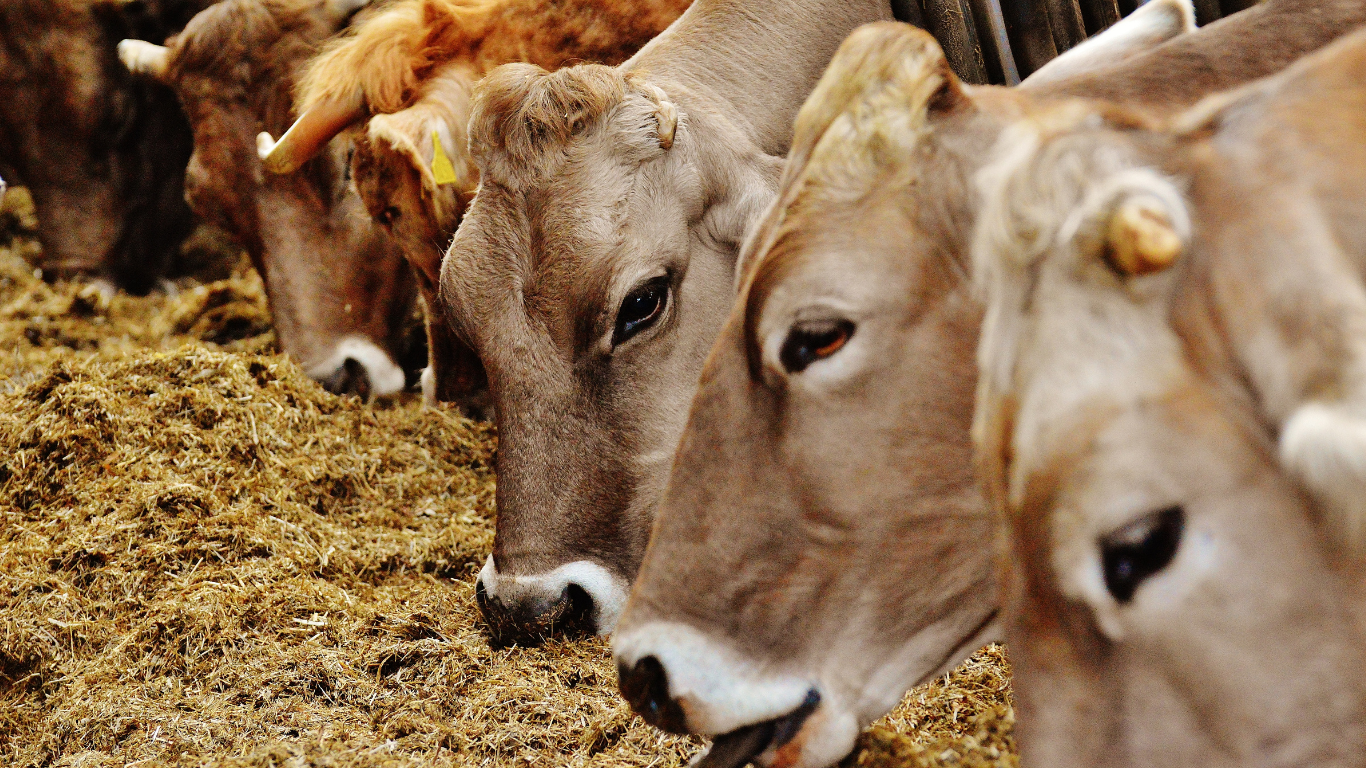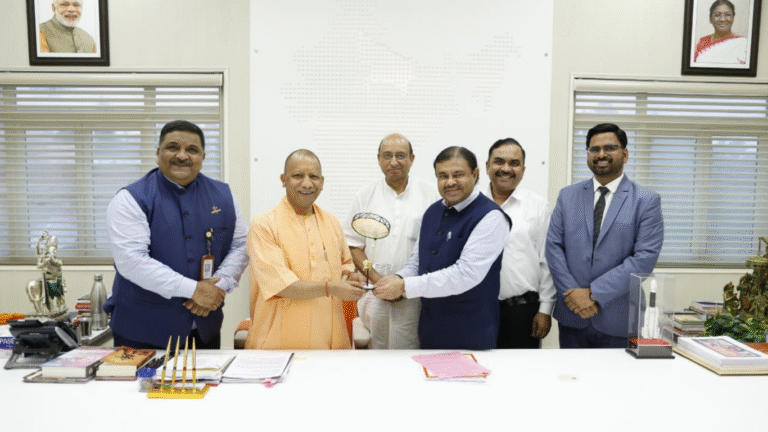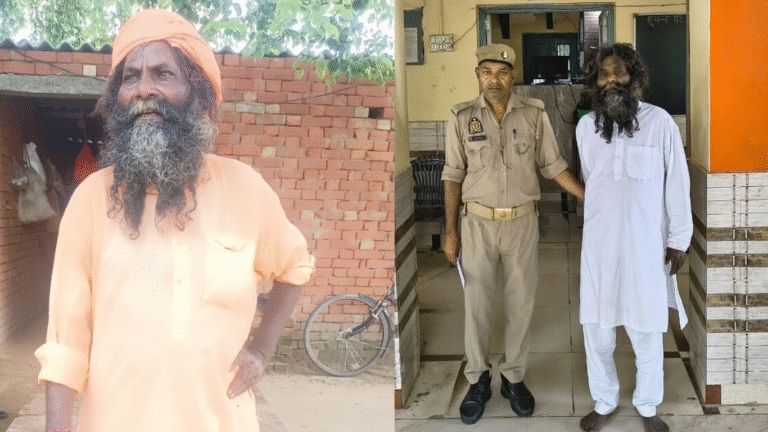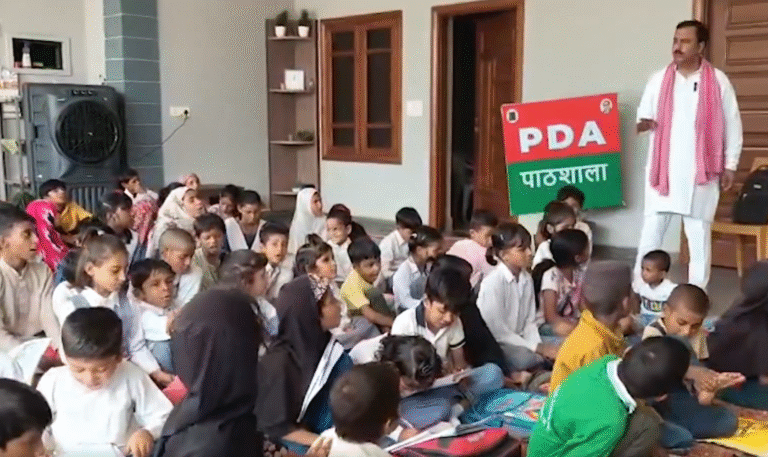
Lucknow – The Uttar Pradesh government is taking bold steps to transform cow shelters into self-sustaining hubs, launching a new initiative to establish “Adarsh Gaushalas” across its eight administrative divisions. Announced today, this plan aims to promote cow welfare, create jobs, and strengthen rural economies through eco-friendly farming practices. The first model gaushala, Khangwa Shyam Srishti Mangalam Gaushala in Bareilly’s Majhgawan Block, was declared a trailblazer for this ambitious project, setting a standard for others to follow.
The idea is to make these gaushalas more than just shelters for stray or destitute cows. By using cow dung and urine to produce biogas, organic fertilizers, and other products, the state hopes to turn these centers into self-reliant units that support local communities. Shyam Bihari Gupta, Chairman of the Uttar Pradesh Gauseva Commission, emphasized that these model shelters will inspire similar efforts across the state’s 75 districts. “We’re not just protecting cows; we’re building a sustainable future for our villages,” Gupta said during a press conference in Lucknow.
A Plan Rooted in Sustainability
The Adarsh Gaushala initiative, backed by Chief Minister Yogi Adityanath, focuses on eight divisions: Ayodhya, Varanasi, Gorakhpur, Chitrakoot, Bareilly, Agra, Kanpur, and Jhansi. In the first phase, one cow shelter in each division will be upgraded with modern facilities, including biogas plants and vermicompost units. Alongside this, one block in each division will be selected to promote natural farming, creating model clusters that combine cow-based agriculture with local resources.
This approach builds on earlier efforts. In 2023, Adityanath directed officials to develop self-sustaining gaushalas using public-private partnerships (PPPs). He suggested linking shelters to projects like compressed biogas (CBG) plants, cow dung-based paints, and organic farming to make them financially independent. The state has already invested heavily, with Rs 2,000 crore allocated for stray cattle protection in the latest budget, plus Rs 1.60 crore per large shelter to support 543 new gaushalas.
The Bareilly model gaushala, for instance, is already showing results. Equipped with modern infrastructure, it uses cow dung to produce biogas and manure, reducing reliance on external funding. Local farmers benefit from affordable organic fertilizers, which boost soil fertility and promote chemical-free agriculture. “This is a game-changer for our village,” said Ram Prasad, a farmer from Majhgawan. “The gaushala gives us manure at low cost, and the jobs it creates keep our youth here.”
Learning from Success Stories
The initiative draws inspiration from projects like the Adarsh Gaushala in Gwalior, Madhya Pradesh, which became India’s first self-sufficient gaushala with a CBG plant in 2024. Spread over five acres and developed with the Indian Oil Corporation for Rs 31 crore, it produces 2-3 tons of bio-CNG daily and 10-15 tons of organic manure, creating jobs and cutting carbon emissions. Uttar Pradesh aims to replicate this model, tailoring it to local needs like those in the Ganga River villages and Bundelkhand region, where water scarcity and stray cattle have long been issues.
The state is also promoting schemes like the Nandini Krishak Samriddhi Yojana, offering 50% subsidies on bank loans for cattle rearing, and the Amrit Dhara Yojana, providing loans up to Rs 10 lakh without guarantors for smaller amounts. These programs encourage farmers to adopt indigenous cow breeds and integrate them into organic farming, ensuring both cow welfare and economic growth.
Challenges and Criticism
Despite the enthusiasm, the plan faces hurdles. In 2022, Samajwadi Party leader Akhilesh Yadav criticized the state’s gaushalas, alleging neglect led to cows dying of hunger despite crores in funding. He promised better rehabilitation for stray cattle if his party returned to power. Farmers in regions like Bundelkhand have also raised concerns about stray cattle damaging crops, a problem the government hopes to address by expanding gaushalas and grazing grounds. Over 43,000 hectares of land have been reclaimed for this purpose through anti-land grabbing efforts.
Critics also point out that sustaining gaushalas requires consistent funding and community support. “The idea is great, but it needs proper management,” said Anita Sharma, a local NGO worker in Varanasi. “Without training for shelter staff and farmers, these projects might struggle.”
Looking Ahead
The government is moving fast to address these concerns. During the recent Maha Kumbh, the Ministry of Animal Husbandry held discussions to refine the gaushala strategy, focusing on training programs for fodder production and waste management. The state is also collaborating with organizations like the National Dairy Development Board and NABARD to ensure technical and financial support.
As Uttar Pradesh rolls out its Adarsh Gaushalas, the initiative could set a new standard for sustainable rural development, blending tradition with innovation. If successful, it may inspire other states to follow suit, turning cow shelters into engines of economic and environmental progress.



